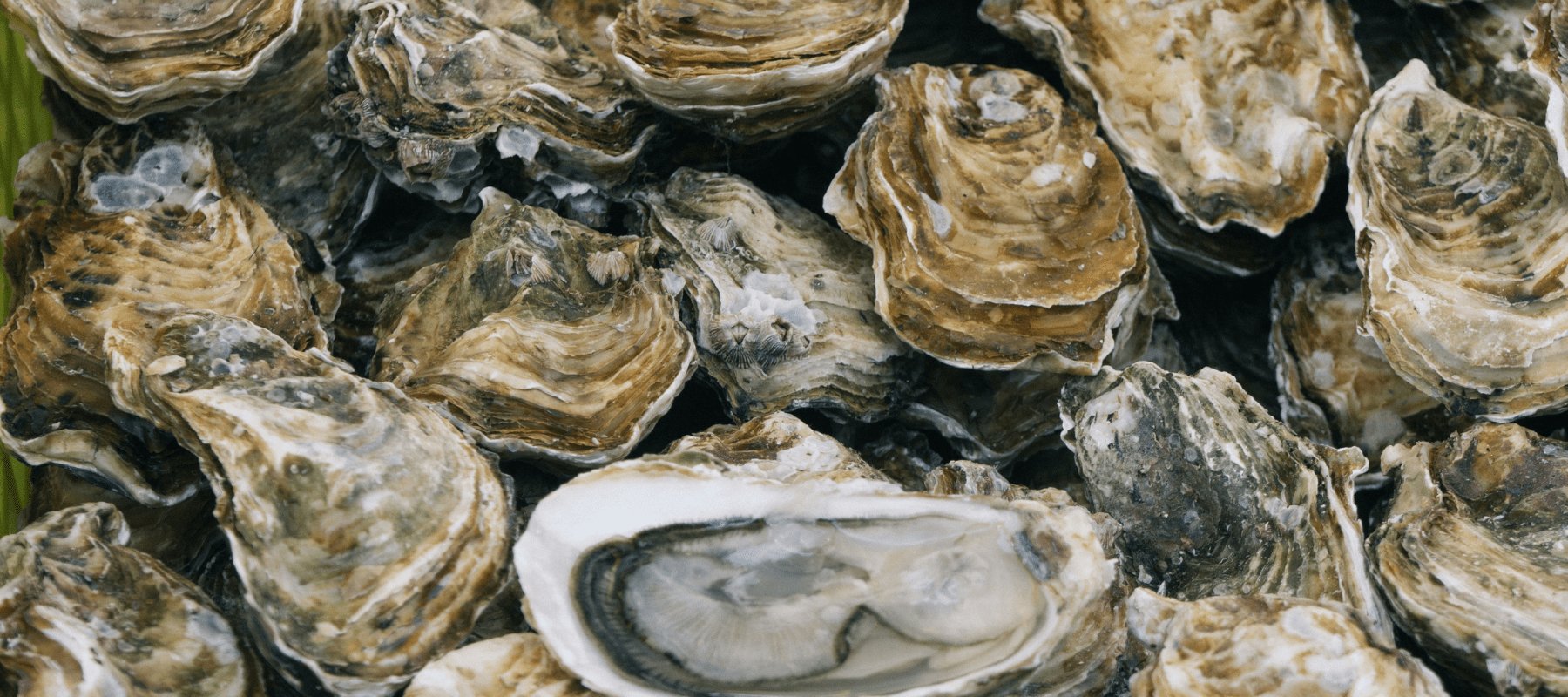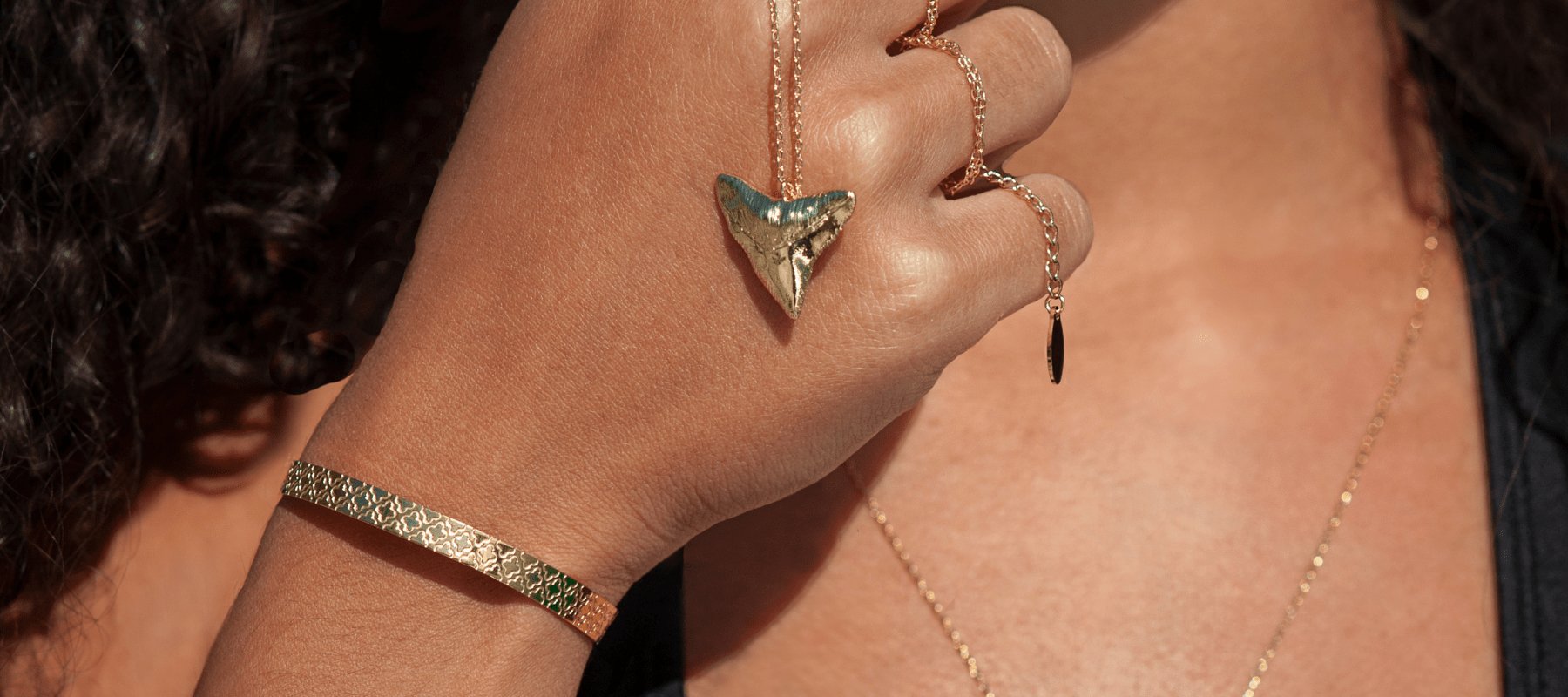
Everything you need to know about freshwater pearl jewellery
What are freshwater pearls?
Freshwater pearls are predominantly cultivated within the luscious mantle, which is the inner edge, of freshwater-dwelling mussels, particularly the Hyriopsis cumingi and Hyropsis schlegeli species. These mussels thrive in various freshwater habitats and can be found or raised in many regions worldwide. Freshwater pearls are though predominantly grown in China, Japan and the United States.

How do environmental factors influence the quality of freshwater pearls?
Environmental factors exert a significant influence on the quality of freshwater pearls, dictating their size, shape, color, and overall luster. These factors encompass a range of elements, including water quality, temperature, and the presence of pollutants. Additionally, the health and condition of the host mussels directly impact pearl formation. For instance, mussels thriving in pristine, unpolluted freshwater environments tend to produce pearls of superior quality compared to those grown in polluted or disturbed habitats. Furthermore, variations in nutrient availability and sediment composition can influence the growth rate and thickness of nacre layers, ultimately affecting the pearl's durability and aesthetic appeal. Therefore, understanding and managing these environmental factors are essential for producing high-quality freshwater pearls and a healthy aquatic environment is needed in order to grown pristine pearls.
What colors, shapes, and sizes do freshwater pearls come In?
Color: Freshwater pearls exhibit a captivating spectrum of colors, ranging from creamy whites and soft pastels to vibrant hues of pink, peach, lavender, baby blue and even striking shades of black. These diverse color variations add depth and character to freshwater pearl jewelry, allowing individuals to find the perfect match for their style and personality.
Shape: In terms of shapes, freshwater pearls are celebrated for their uniqueness, offering a plethora of options beyond the traditional perfectly round pearls commonly associated with saltwater pearls. Shapes may include near-round, oval, button, and baroque, the latter characterized by irregular or asymmetrical forms.
Size: In regard to sizes, freshwater pearls span a broad range of diameters, allowing for customization and versatility in jewelry crafting. From delicate, petite pearls measuring less than 5mm to larger, more substantial pearls exceeding 10mm or more, freshwater pearls cater to diverse preferences and occasions. Whether adorning a dainty necklace or making a bold statement with oversized earrings, the varied sizes of freshwater pearls offer limitless possibilities for creating stunning and personalized jewelry pieces.

Are freshwater pearls real?
Yes, freshwater pearls are genuine pearls. Unlike imitation pearls or synthetic alternatives, freshwater pearls are formed through a genuine biological process within freshwater mussels. These mollusks produce pearls as a protective response to irritants that infiltrate their shells, secreting layers of nacre also knows as mother of pearl, around the foreign objects. Over time, these layers accumulate, resulting in the formation of the exquisite pearls admired for their iridescence and uniqueness. Nacre or mother of pearl consists of 95% organic aragonite and calcite, both forms of calcium carbonate (CaCO3), along with 5% proteins, predominantly conchiolin, and polysaccharides.
One notable distinction between freshwater pearls and saltwater pearls lies in their formation process. While saltwater pearls are typically cultivated around a spherical bead inserted into oysters, freshwater pearls develop around organic tissue, resulting in a more irregular or asymmetrical shape. Despite these differences, both freshwater and saltwater pearls are genuine and highly prized in the world of jewelry.

What are cultured freshwater pearls?
Cultured freshwater pearls are pearls that are intentionally cultivated or farmed within freshwater environments, such as rivers, lakes, and ponds. These pearls are formed through a process where a small irritant, such as a piece of mantle tissue, is inserted into the mollusk by pearl farmers. The mollusk then coats the irritant with layers of nacre, gradually forming a pearl. Cultured freshwater pearls offer a sustainable and controlled alternative to naturally occurring pearls, allowing for consistent quality and availability in the market.
Creating the perfect environment for mussel cultivation is essential for fostering optimal conditions for pearl growth. Sustainable pearl farming aims to achieve this delicate balance while also prioritizing the preservation of the local ecosystem. By carefully managing factors such as water quality and habitat conditions, farmers ensure that mussels have the best chance of producing high-quality pearls suitable for jewelry.
It's worth noting that freshwater pearls form around the interior edges of the mussel's shell, rather than deep inside like saltwater pearls. As a result, in certain cases, farmers can harvest pearls without harming the mussel itself. By gently opening the shell, farmers can retrieve the pearls while allowing the mussel to continue its growth and potentially produce more pearls in the future.
How do you care for freshwater pearl jewellery ?
Caring for freshwater pearl jewelry is essential to keeping the pearls pretty. Wear and tear can make the pearls matte or the pearls can get scratches like most other materials. Here are some tips to help you keep your pearls looking their best:
Handle with Care: Always handle your freshwater pearl jewelry with gentle hands to prevent scratching or damaging the pearls' delicate surface.
Avoid Exposure to Chemicals: Pearls are sensitive to chemicals, including those found in perfumes, cosmetics, and hairsprays. To prevent damage, it's best to apply these products before putting on your pearl jewelry.
Store Properly: Store your freshwater pearl jewelry separately from other jewelry pieces to prevent scratching. Avoid storing pearls in direct sunlight or extreme temperatures, as this can cause them to fade or become discolored over time.
Clean Regularly: Clean your freshwater pearl jewelry after each wear using a soft, damp cloth to remove any dirt or oils. Avoid using harsh cleaners or abrasive materials, as these can damage the pearls' delicate surface.
Restringing: If you notice that the silk thread holding your pearl necklace or bracelet is stretched or worn, consider having it professionally re-string to prevent breakage and loss of pearls.
Wear with Caution: While freshwater pearls are durable, they are still relatively soft compared to other gemstones. Avoid wearing pearl jewelry during activities that may cause excessive wear and tear, such as sports or heavy labor.
By following these simple care tips, you can ensure that your freshwater pearl jewelry remains radiant and beautiful for years to come.
In addition to these tips, we often get the following question:
Can freshwater jewellery get wet?
While freshwater pearls can endure exposure to water, it's generally advisable to minimize wetting them whenever feasible. Although pearls originate in a moist environment and are sometimes polished with salt and water post-harvest to enhance their shine, it's important to be cautios with your freshwater pearl jewellery.
Avoid storing freshwater pearls in damp locations and refrain from placing them on wet surfaces. Any contact with moisture or other substances can lead to microscopic wear-and-tear, diminishing the pearls' radiance over time. Additionally, water often contains chlorine and heavy metals, which may cause pearls to lose their shine and become matte. In the event that your freshwater pearls do become wet, gently dry them with a soft cloth and store them in a cool, dry environment to preserve their beauty and sheen.

Can freshwater pearls be worn every day?
Absolutely yes! Freshwater pearls are durable and versatile gems that can add a touch of elegance to your everyday style. Their timeless beauty and understated charm make them suitable for daily wear, whether you're dressing up for work or simply running errands. Freshwater pearls are fairly resilient and can withstand the rigors of daily activities with proper care. However, it's essential to take precautions to preserve their shine. Avoid exposing them to harsh chemicals, such as perfumes or hairsprays, and remove them before engaging in activities that may subject them to excessive wear and tear. You can see our full guide to how to take care of your freshwater pearl jewellery in the sections above. By following these guidelines and treating your freshwater pearls with care, you can enjoy their beauty day in and day out, adding a touch of sophistication to every ensemble.
How long do freshwater pearls last?
Freshwater pearls are renowned for their longevity, often lasting for generations when well-maintained. With proper care, these exquisite gems can retain their shine, making them cherished heirlooms that can be passed down through families. The lifespan of freshwater pearls depends on various factors, including the quality of the pearls, how they are worn and stored, and the care they receive over time. By handling them gently, avoiding exposure to harsh chemicals and extreme temperatures, and storing them properly when not in use, you can help ensure that your freshwater pearls remain radiant for many years to come. Regular cleaning and occasional restringing, especially for pearl necklaces and bracelets, can also help prolong their lifespan and maintain their appearance. With the right care and attention, freshwater pearls can be treasured keepsakes that continue to enchant and delight for years to come.
Explore our selection of freshwater pearl jewellery here






Leave a comment
This site is protected by hCaptcha and the hCaptcha Privacy Policy and Terms of Service apply.